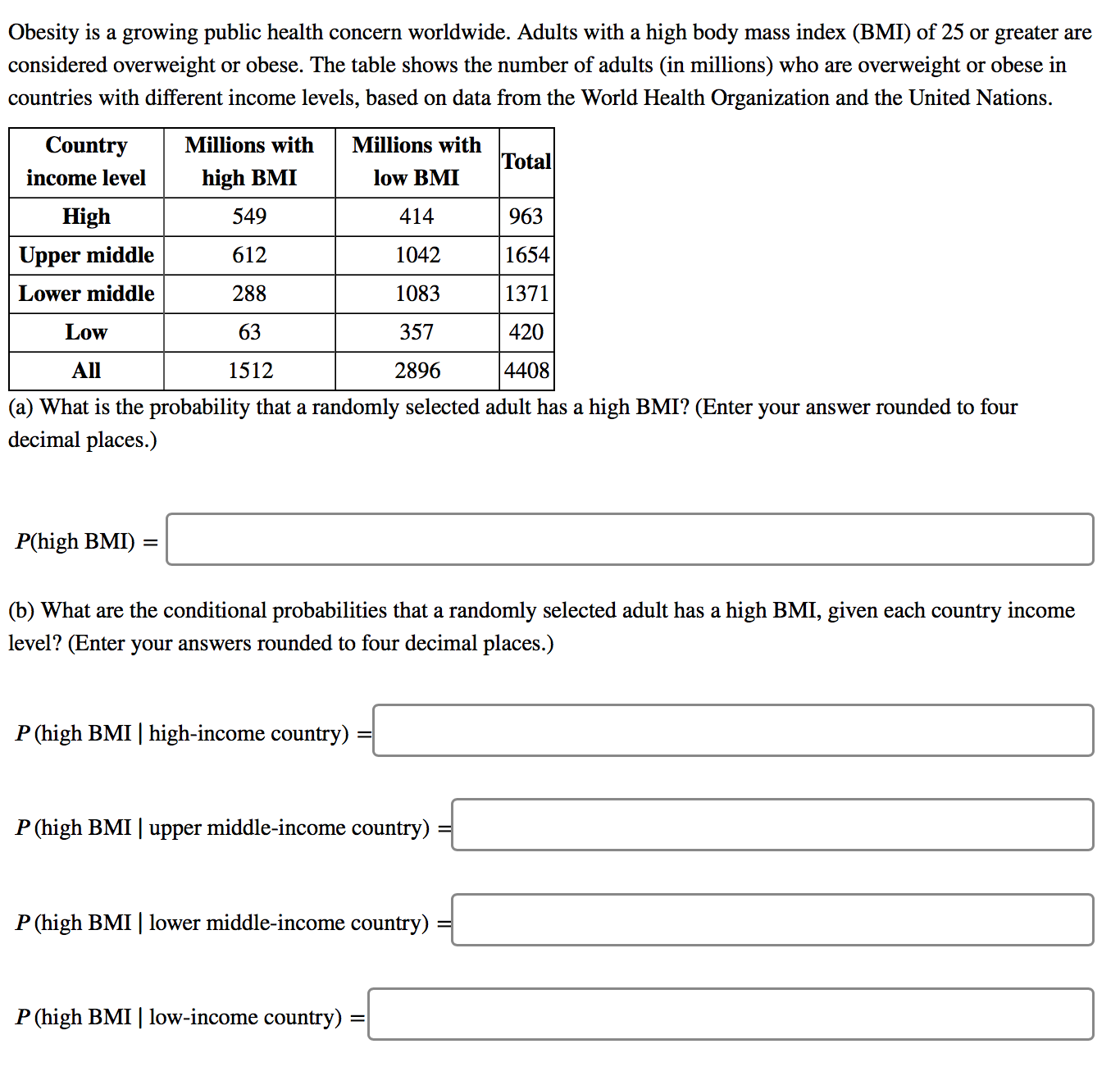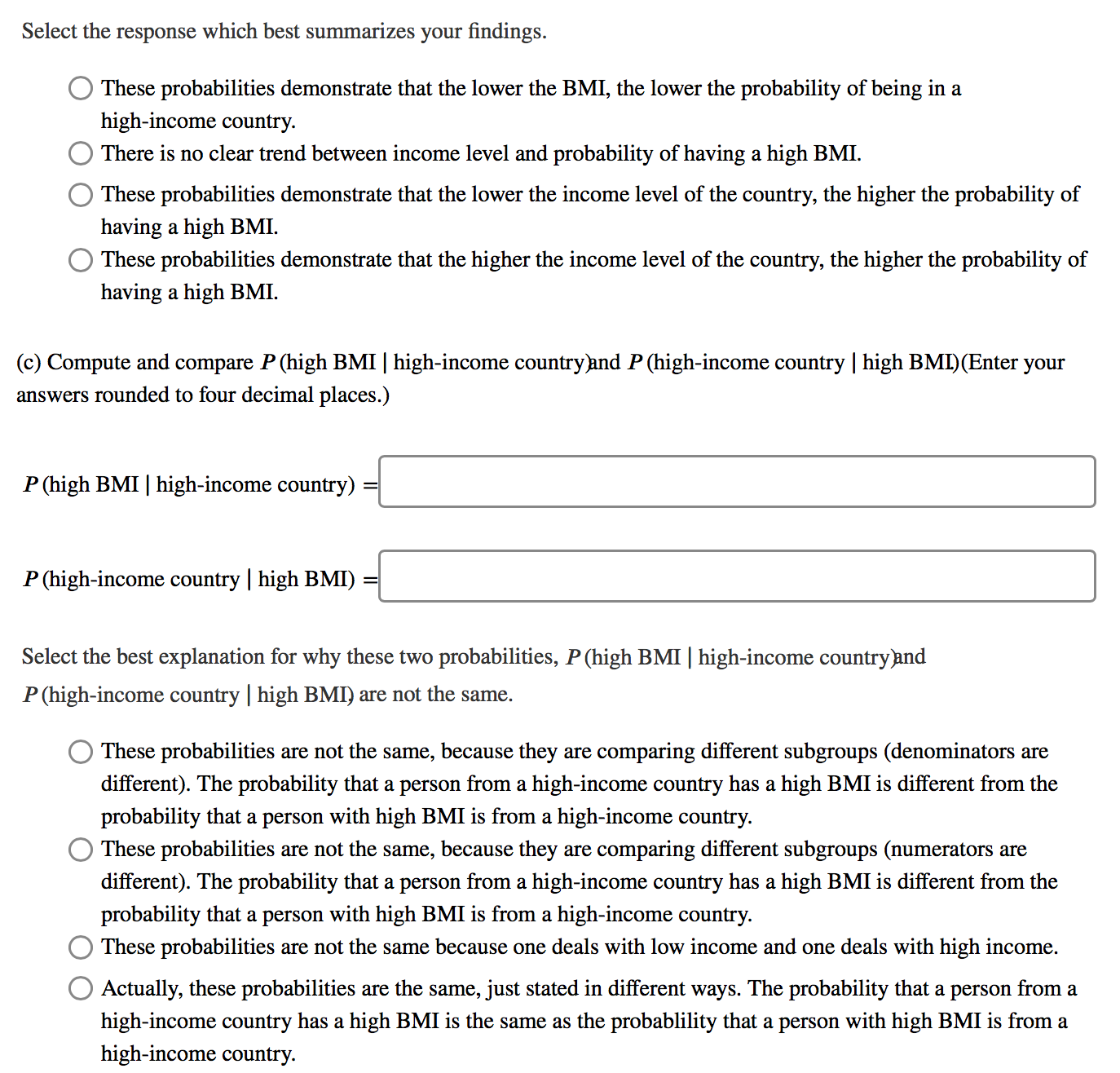Please help with the following question by showing your full work, I'm struggling with the concepts!
Obesity is a growing public health concern worldwide . Adults with a high body mass index ( BMD ) of 25 or greater are considered overweight or obese . The table shows the number of adults ( in millions ) who are overweight or obese in countries with different income levels , based on data from the World Health Organization and the United Nations . Country* Millions with Millions with Income level high BMI LOW BMI Total High 549 414 963 Upper middle 512 1042 1654 Lower middle 288 1083 1371 LOW 63 357 420 All 1512 2896 4408 a ) What is the probability that a randomly selected adult has a high BMI ? ( Enter your answer rounded to four decimal places . ) P ( high BMD ) = ( b) What are the conditional probabilities that a randomly selected adult has a high BMI , given each country income level ? ( Enter your answers rounded to four decimal places . ) P ( high BMI / high - income country ) =\\ P ( high BMI / upper middle - income country ) P ( high BMI / lower middle - income country ) =\\ P ( high BMI / low - income country ) =Select the response which best summarizes your findings . O These probabilities demonstrate that the lower the BMI , the lower the probability of being in a high - income country . There is no clear trend between income level and probability of having a high BMI . O These probabilities demonstrate that the lower the income level of the country , the higher the probability of having a high BMI . O These probabilities demonstrate that the higher the income level of the country , the higher the probability of having a high BMI . ( C ) Compute and compare ? ( high BMI / high - income country and ? ( high - income country / high BMI ) ( Enter your* answers rounded to four decimal places . ) P ( high BMI / high - income country )` P ( high - income country / high BMD ) =\\ Select the best explanation for why these two probabilities , P ( high BMI / high- income country and P ( high- income country / high BMD) are not the same . O These probabilities are not the same , because they are comparing different subgroups ( denominators are* different ) . The probability that a person from a high- income country has a high BMI is different from the probability that a person with high BMI is from a high - income country . These probabilities are not the same , because they are comparing diferent subgroups ( numerators are* different ) . The probability that a person from a high- income country has a high BMI is different from the probability that a person with high BMI is from a high- income country . These probabilities are not the same because one deals with low income and one deals with high income . O Actually , these probabilities are the same , just stated in different ways . The probability that a person from a high - income country has a high BMI is the same as the probablylity that a person with high BMI is from a high - income country








